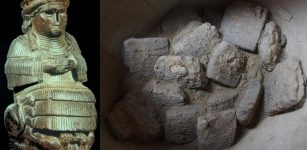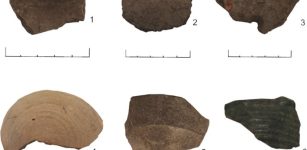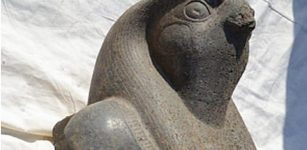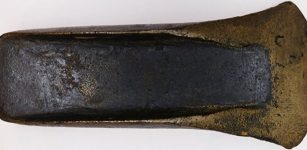Why Was The Magical Sword Azoth Of Paracelsus So Special?
Ellen Lloyd – AncientPages.com - Magical swords are frequently mentioned in myths and legends, but did you know Paracelsus had a very unusual sword that had a life of its own?
Azoth, the magical sword of Paracelsus, was special in many ways.
Left: Paracelsus. Credit: Public Domain - Right: A Magical sword. Credit: Stock Photo
Paracelsus was described as an arrogant fool due to his lack of social skills, but he was no such thing. He was a fascinating person with a complex personality and a scientist who was much ahead of his time. Most people, even today, would find the self-confident Paracelsus to be very eccentric, but his background, studies, work, and goal to the truth made him the man he was.
Paracelsus (1493 - 1541) was a Swiss-German botanist, philosopher, astrologer, alchemist, and one of the most influential medical scientists in early modern Europe. As a young boy, he became interested in alchemy, and in time it became a passion that stayed with him all his life.
Paracelsus became a very controversial figure who, like many other Renaissance scientists, became a bridge between the new and old world in his short lifetime.
The Renaissance period that spanned the 14th century to the 17th century changed Europe in many ways, and Paracelsus was one of many unusual and talented scientists who contributed to these changes.
Renaissance scientists like Paracelsus opened doors to a new world. Credit: Renaissance Portal, painting by Robert Breyer, (1866 - 1941)
It may sound like a contradiction, but Paracelsus, who was deeply fascinated with mysticism, alchemy, astrology, and magic, was also very religious. His interest in the occult led him to be accused of being a devil worshipper, but this was not true. Paracelsus simply believed the mystery of nature was the mystery of God.
During Medieval times, alchemists were often persecuted. Therefore, they had to invent their own complex vocabulary of alchemy signs and symbols to conceal their ingredients, memorize their knowledge, and keep it secret. Like most of all alchemists, Paracelsus had three goals, to find the Stone of Knowledge (The Philosophers' Stone), to discover the medium of Eternal Youth and Health, and to discover the transmutation of metals.
The four elements of Alchemy are salt, mercury, sulfur, and azoth.
Being a man who avoided social contact, it’s difficult to determine what is true and not about his many inventions. Paracelsus kept to himself and experimented much with chemicals. What he really accomplished, no one can tell with certainty. However, some people spread rumors Paracelsus owned a strange sword that he slept with by his side. The sword named Azoth was one of the reasons Paracelsus became suspected of sinister behavior and contact with dark and evil forces. Azoth was said to be three to four feet long with a cross guard and globular pommel.
The 1567 "Rosicrucian" portrait. The word Azoth is inscribed on the sword Paracelsus is holding. Credit: Public Domain
It could have been just an ordinary sword, but it was not. People said the sword was alive! It could dance and frequently made a continuous rattling sound waking up Paracelsus’s neighbors.
Why Paracelsus needed a sword such as Azoth has never been explained, but being a bad-tempered, controversial scientist made him many enemies. Some think he kept the sword close to protect himself from danger.
To laymen, Paracelsus’s sword Azoth may have been a curious and dangerous weapon capable of performing magic. One story tells that inside the sword handle, the great alchemist Paracelsus “kept his familiar, who would be released from Azoth to produce things for his master, such as gold coins, to pay for a night’s sleep at an inn.” 1
In alchemy, Azoth “is considered the Universal Medicine, to which all things are related, containing within itself all other medicines. It is also the term for the Mercury of any Metallic Body. Azoth is considered as a living spirit.” 2
Perhaps this was the reason people spread rumors his sword, Azoth, was alive.
No such sword has ever been found, and its existence remains in the realm of mythology, though there are portraits of Paracelsus holding a sword that bears the inscription Azoth.
If you enjoyed this article consider becoming a member. Our member section offers a wealth of informative and insightful articles similar to this one. Upgrading to a premium membership gives you access to all our articles, including our library of ancient and unexplained mysteries.
Updated on August 4, 2024
Written by Ellen Lloyd - AncientPages.com
Copyright © AncientPages.com All rights reserved. This material may not be published, broadcast, rewritten or redistributed in whole or part without the express written permission of AncientPages.com
Expand for references- All About History - History Of The Occult, 2018, Future Publishing Limited
- Israel Regardie, Chic Cicero, Sandra Tabatha Cicero - The Philosopher's Stone: Spiritual Alchemy, Psychology, and Ritual Magic
More From Ancient Pages
-
 How Did Sargon Become The Most Powerful Ruler Of Mesopotamia?
Featured Stories | Apr 3, 2020
How Did Sargon Become The Most Powerful Ruler Of Mesopotamia?
Featured Stories | Apr 3, 2020 -
 Ancient ‘Refrigerator’ And Unique Coins Discovered In Roman Military Camp In Bulgaria
Archaeology | Oct 3, 2022
Ancient ‘Refrigerator’ And Unique Coins Discovered In Roman Military Camp In Bulgaria
Archaeology | Oct 3, 2022 -
 Mystery Of The Minoan Blue Monkeys Depicted In Frescoes
Archaeology | Apr 16, 2020
Mystery Of The Minoan Blue Monkeys Depicted In Frescoes
Archaeology | Apr 16, 2020 -
 Maori God Pourangahua And His Flying Bird Traversing The Ancient Skies
Featured Stories | Oct 4, 2015
Maori God Pourangahua And His Flying Bird Traversing The Ancient Skies
Featured Stories | Oct 4, 2015 -
 Ancient DNA Sheds Light On ‘Lost’ Indigenous People Of Uruguay And Reveals A Surprising Connection
Archaeology | May 11, 2022
Ancient DNA Sheds Light On ‘Lost’ Indigenous People Of Uruguay And Reveals A Surprising Connection
Archaeology | May 11, 2022 -
 Surprising Ancient Signs Found On The Ceiling Of An Egyptian Temple In Saqqara Could Rewrite History
Featured Stories | Oct 29, 2024
Surprising Ancient Signs Found On The Ceiling Of An Egyptian Temple In Saqqara Could Rewrite History
Featured Stories | Oct 29, 2024 -
 Ötzi Had Dark Skin, Bald Head And Anatolian Ancestry- DNA Reveals
Evolution | Aug 16, 2023
Ötzi Had Dark Skin, Bald Head And Anatolian Ancestry- DNA Reveals
Evolution | Aug 16, 2023 -
 Mysterious Ancient Village In A Prehistoric Anomalous Zone – Dangerous Underground Secret – Part 2
Ancient Mysteries | Jul 28, 2020
Mysterious Ancient Village In A Prehistoric Anomalous Zone – Dangerous Underground Secret – Part 2
Ancient Mysteries | Jul 28, 2020 -
 2000-Years Old Road Was Discovered In Manisa Province,Turkey
Archaeology | Aug 14, 2017
2000-Years Old Road Was Discovered In Manisa Province,Turkey
Archaeology | Aug 14, 2017 -
 Sensational Find: Huge Cuneiform Archive Of Mysterious Ancient Clay Tablets Discovered In Iraq
Archaeology | Oct 26, 2017
Sensational Find: Huge Cuneiform Archive Of Mysterious Ancient Clay Tablets Discovered In Iraq
Archaeology | Oct 26, 2017 -
 Ancient Mystery Of Peculiar Nail With Six Faces And Six Eyes – Unusual Discovery In Borgholm Castle, Sweden
Artifacts | Jan 8, 2017
Ancient Mystery Of Peculiar Nail With Six Faces And Six Eyes – Unusual Discovery In Borgholm Castle, Sweden
Artifacts | Jan 8, 2017 -
 Secrets Of Ninja Swords – Favorite Weapon Of The Shinobi
Featured Stories | Aug 13, 2018
Secrets Of Ninja Swords – Favorite Weapon Of The Shinobi
Featured Stories | Aug 13, 2018 -
 Graves Of Celtic Princes Reveal How Powerful Women Were In Pre-Roman Germany
Archaeology | Jun 4, 2024
Graves Of Celtic Princes Reveal How Powerful Women Were In Pre-Roman Germany
Archaeology | Jun 4, 2024 -
 Siberia Had A Major Skull Surgery Center 2,500 Years Ago
Ancient History Facts | Jul 19, 2019
Siberia Had A Major Skull Surgery Center 2,500 Years Ago
Ancient History Facts | Jul 19, 2019 -
 Earliest Evidence Of Wine Consumption In The Americas Found In Caribbean
Archaeology | May 23, 2023
Earliest Evidence Of Wine Consumption In The Americas Found In Caribbean
Archaeology | May 23, 2023 -
 Colossus Of Standing Falcon-Headed God Horus Unearthed In Egypt’s Luxor
Archaeology | Jan 6, 2020
Colossus Of Standing Falcon-Headed God Horus Unearthed In Egypt’s Luxor
Archaeology | Jan 6, 2020 -
 Papyri Was Still In Use After The Arab Invasion In Egypt
Archaeology | Jul 14, 2020
Papyri Was Still In Use After The Arab Invasion In Egypt
Archaeology | Jul 14, 2020 -
 Truth Behind Mysterious Ancient Metal Depositions Revealed By Scientists
Archaeology | Dec 8, 2021
Truth Behind Mysterious Ancient Metal Depositions Revealed By Scientists
Archaeology | Dec 8, 2021 -
 Underwater Excavations: Greek And Danish Archaeologists Research Ancient Harbor Town Lechaion
Archaeology | Dec 25, 2015
Underwater Excavations: Greek And Danish Archaeologists Research Ancient Harbor Town Lechaion
Archaeology | Dec 25, 2015 -
 World’s Oldest Shoe Is 5,000-Year-Old
Archaeology | Jul 10, 2015
World’s Oldest Shoe Is 5,000-Year-Old
Archaeology | Jul 10, 2015



